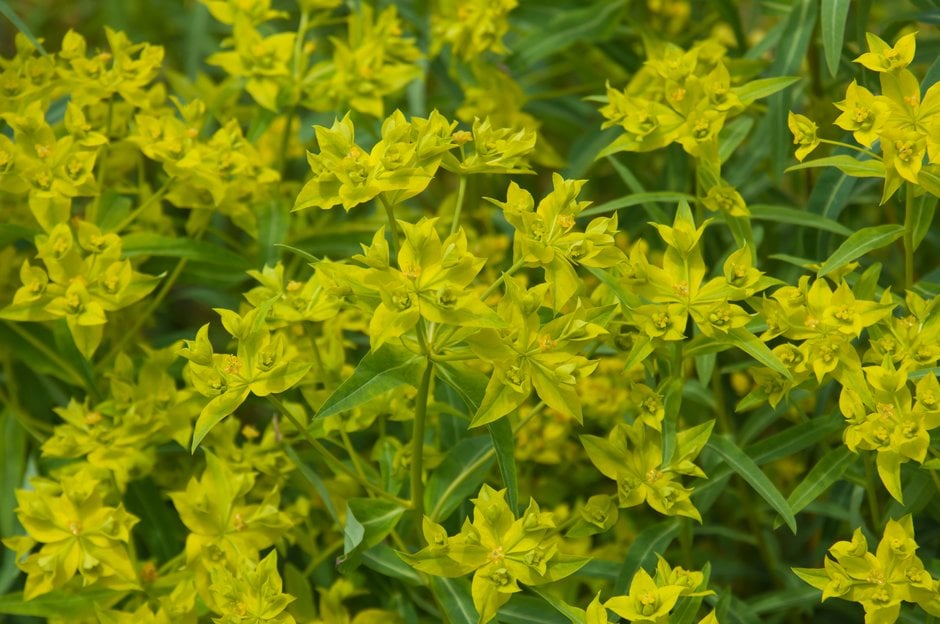Euphorbia ceratocarpa

horned spurge
A tall, upright, evergreen, sub-shrub to about 170cm in height and spread with slightly bluish foliage. The main flowering period is mid-summer to mid-autumn, but it can produce its yellow-green flowers more or less year round in mild conditions
Size
Ultimate height
1.5–2.5 metresTime to ultimate height
2–5 yearsUltimate spread
1.5–2.5 metresGrowing conditions
Moisture
Well–drainedpH
Acid, Alkaline, NeutralColour & scent
| Stem | Flower | Foliage | Fruit | |
| Spring | Green Yellow | Blue Green | ||
|---|---|---|---|---|
| Summer | Green Yellow | Blue Green | ||
| Autumn | Green Yellow | Blue Green | ||
| Winter | Blue Green |
Position
- Full sun
Aspect
South–facing or West–facing or East–facing
Exposure
ShelteredDrought resistance
Yes Hardiness
H4Botanical details
- Family
- Euphorbiaceae
- Native to GB / Ireland
- No
- Foliage
- Evergreen
- Habit
- Bushy
- Potentially harmful
- Humans/Pets: IRRITANT to skin/eye, harmful if eaten. Wear gloves and other protective equipment when handling. For further information and contact numbers regarding pets, see the HTA guide to potentially harmful plants
- Genus
Euphorbia can be annuals, perennials, shrubs or succulents, with milky sap and small flowers held within cupped, often colourful bracts
- Name status
Correct
- Plant range
- Sicily, S. Italy
How to grow
Cultivation
Grow in well-drained, light soil in full sun. See Euphorbia for further advice
Propagation
Propagate by softwood cuttings in spring or early summer; dip cut surfaces in charcoal or lukewarm water to prevent bleeding
Suggested planting locations and garden types
- Cottage and informal garden
- Gravel garden
- Wildlife gardens
- Flower borders and beds
Pruning
Cut back flowered stems as they fade
Pests
May be susceptible to aphids
Diseases
May be susceptible to root and stem rots in wet conditions
Get involved
The Royal Horticultural Society is the UK’s leading gardening charity. We aim to enrich everyone’s life through plants, and make the UK a greener and more beautiful place.
